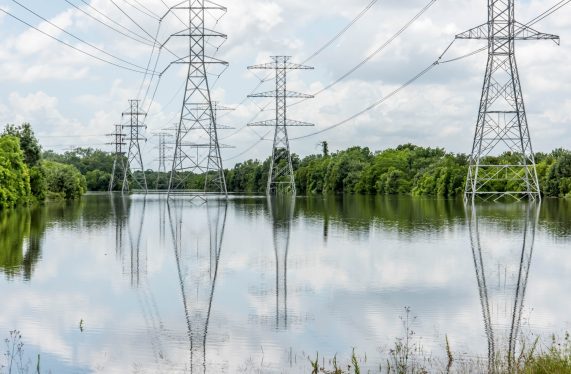The ever-increasing construction of infrastructure to meet the needs of modern society contributes crucially to emissions of harmful gases and the consumption of non-renewable natural resources, globally.
Thus, in an attempt to limit these negative impacts, in the context of a sustainable, human- and environment-friendly, development, the minimization of their material is sought in modern constructions, as this implies a minimization of both gas emissions and the use of natural resources.
Applying state-of-the-art practices, SYNENERGY ADVISORS participates in the global effort to reduce the environmental footprint in its own way.
The high voltage pylons used today are based on old designs created in the 60's in America. Back then, in the absence of modern design programs, the pylons were designed with an excessive amount of steel for safety reasons.
On the other hand, the modern Eurocodes include stricter provisions than the old regulations, indicating that pylons often need reinforcement due to the extreme weather loads they bear.

The Z4 type high voltage pylon is the first to be studied by our company, with the aim of optimizing its carrier. This study was carried out as part of a postgraduate student internship at TU Delft's Civil Engineering department.
The optimal carrier implies safe construction (according to modern regulations), but with the minimum required steel, i.e. with the minimum environmental footprint.
However, these two goals conflict with one another: the less the construction material, the more difficult it is for the pylon to withstand the loads. In order to achieve the optimal carrier, it is necessary to use a parametric program that statically controls millions of different pylon designs. With appropriate optimization tools, the program "scans" all possible operators and checks the exploitation rates of each operator's members to be less than the unit's.
At the same time, it calculates the mass of each carrier, looking for the pylon of the lowest possible weight.
The creation of the digital model of the pylon and the optimization code is a repetitive and time-consuming process, combining knowledge of our experienced engineers and engineers of the new generation who bring modernized practices from abroad. The result vindicated our efforts, as a new, renewed design of the Z4 pillar was created, which follows the modern provisions of the Eurocode and contributes to the global goal of sustainable development.
The new pylon can safely carry the heaviest loads required by today's regulations, having a mass of 9404.2 kg, just 7.9% more than the existing design. In addition, the new improved design has managed to reduce the tower's footprint on the ground, as the base of the existing pylon covers a square of 6.96m × 6.96m, while the base of the new tower covers a square of 5.86m × 5.86m.
Overall, the improved pylon brings together multiple advantages:
- Construction safety according to modern regulations.
- Minimized environmental footprint.
- Minimized material costs.
- Easier placement and erection of the pylon, thanks to its smaller base.
Of course, further static tests are necessary to confirm the validity of the new design. However, the use of a parametric program to optimize a carrier is a powerful and pioneering tool that will form the basis of future construction studies.



